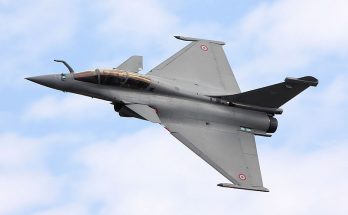A snapshot of recent news from sources around the world on the ongoing Russia-Ukraine war.

Political Developments
European governments continue to move closer towards seizing frozen Russian government securities, held in limbo after Moscow invaded Ukraine in 2022. Already, the E.U. has issued loans for military procurement backed by interest on those securities, but has stayed away from touching the assets themselves. That stance appears to be changing, as more European governments and officials warm to the idea of using the frozen Russian funds as a loan to Kyiv.
The E.U. has “a sound legal way to do this,” European Commission President Ursula von der Leyen told reporters on Wednesday.
Russia unsurprisingly condemned the possible confiscation of its assets, and in retaliation passed a law that would enable Russia to seize Western assets in its country.
Political relations between Hungary and Ukraine continue to slide. Last Friday, Kyiv complained that a handful of Hungarian drones had violated its airspace. Speaking on the subject on Monday, Hungarian Prime Minister Viktor Orban dismissed the complaint, stating that Kyiv should focus on its eastern border. He moreover questioned Ukraine’s sovereignty, pointing out its loss of territory to Russia and financial dependency on the West.
The spat with Hungary continues to serve as an impediment to Kyiv’s E.U. accession process, which Budapest has blocked. The E.U. has been exploring ways to sidestep the Hungarian veto so as to at least begin technical negotiations, officials told the Financial Times this week, but full membership requires agreement from all of the bloc’s members.
Military Assistance to Ukraine
The possible delivery of Gripen fighter jets to Ukraine was raised again this week. Responding to a question from the BBC, Ukrainian Deputy Defense Minister Ivan Havrylyuk stated that Kyiv expects the Gripen to enter its Air Force in the future. The comment spurred speculation that a deal might be forthcoming, but the Swedish Ministry of Defense confirmed on September 30 that no such contract has been signed.
Swedish Prime Minister Ulf Kristersson said on Thursday, however, that he had held talks with President Volodymyr Zelensky about the Gripen at a recent meeting in Copenhagen.
Renewed concern about Russian drones has spurred European countries to work with Ukraine on counter-drone practices. This week, Romania said it plans to set up joint production of interceptor drones with Ukraine to help tighten up its C-UAS capabilities.
Israel delivered a Patriot air-defense system to Ukraine over the last few weeks, President Zelensky stated on Saturday. He added that another two should arrive in the fall. Israel decommissioned those Patriots in 2024, as its own air-defense systems were declared operational, but had previously declined Ukrainian requests to donate the hardware.
Battlefield Updates
Over recent weeks, numerous countries in central and eastern Europe have reported Russian drones or fighter jets violating their airspace, spurring discussions among NATO allies about how best to handle the emerging threat. The allies are mostly on the same page about countering the drones, a senior military official told Defense One, but there are still some challenges “around specific authorities and rules of engagement” that need to be resolved.
Italian Prime Minister Giorgia Meloni warned this week that Russian provocations in European airspace are designed to force Europe to prioritize its own air-defense over the supply of equipment to Kyiv.
Russian airstrikes on Kyiv and other major cities continued on Sunday, killing four and injuring dozens more.
The Ukrainian Navy performed a missile strike on an electronics production facility early on Monday using R-360 Neptune cruise missiles, according to a statement published by the service on Telegram. Neptune was originally developed prior to the war with Russia as an anti-ship missile, but has evolved for usage in ground attack missions, as well. The missile reportedly traveled 240 kilometers to hit the target in Russia’s Bryansk.
Ukraine also performed missile and drone strikes on nearby Belgorod province on Monday, disrupting the region’s power supply.
Moving forward, deep Ukrainian strikes may start to benefit from increased U.S. intelligence-sharing, according to a Wall Street Journal report published this week. Washington has previously been reticent to aid long-range Ukrainian strikes, but President Donald Trump has now signed-off on the intelligence-sharing, the WSJ reported.
Washington may also be preparing to send strike weapons carrying ranges of 500 miles, the report added, following a Ukrainian request for the Tomahawk missile.
Russia has performed another missile attack on Kyiv, the Ukrainian capital. Some 48 long-range air- and sea-based missiles were fired on September 28 with the primary target being Kyiv. Ukrainian air defense forces claimed to have shot down 43 of these missiles.
North Korea has developed the Pelbit ballistic missile and reportedly plans to provide this weapon to Russia. The new missile will support Russian military operations against Ukraine. North Korea claims the Pelbit can defeat the advanced air defense systems the West has provided to Ukraine.
Ukroboronprom has unveiled the new long-range Neptune-D cruise missile. The new missile carries a 260 kilogram warhead. The range of the missile is now 1,000 kilometers. The missile is visibly bigger than its predecessor.
For 50 years, Forecast International intelligence reports have been the aerospace and defense industry standard for accurate research, analysis, and projections. Our experienced analysts compile, evaluate, and present accurate data for decision makers. FI's market research reports offer concise analysis of individual programs and identify market opportunities. Each report includes a program overview, detailed statistics, recent developments and a competitive analysis, culminating in production forecasts spanning 10 or 15 years. Let our market intelligence reports be a key part of reducing uncertainties and mastering your specific market and its growth potential. Find out more at www.forecastinternational.com



